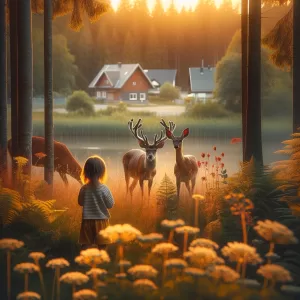In the intricate dance of life, where every creature plays a vital role, the importance of cultivating respect and protection for local wildlife becomes paramount. As stewards of the Earth, our interaction with the natural world shapes the delicate balance of ecosystems. This article embarks on a journey of understanding and action, exploring how we, as individuals and communities, can foster a harmonious relationship with the wildlife that shares our local habitats.
The Symphony of Nature: Understanding Ecosystem Interdependence
At the heart of wildlife protection lies a deep understanding of the interdependence within ecosystems. Every animal, from the smallest insect to the largest mammal, has a role in maintaining the health and balance of their environment. Recognizing this interconnectedness is the first step in fostering respect for wildlife. It’s about seeing the bigger picture – how the presence and well-being of local wildlife directly impact our own lives and the health of our planet.
Local Wildlife: Mirrors of Environmental Health
Local wildlife species are often indicators of the health of our environment. Birds, amphibians, and insects, among others, serve as barometers for ecological changes. By observing and understanding these species, we can gauge the health of our local ecosystems and take proactive steps to address environmental challenges, such as pollution, habitat destruction, and climate change.
Building Bridges: Human-Wildlife Coexistence
Coexisting with wildlife requires a balance between human needs and the needs of wild animals. This balance can be achieved through education and community initiatives that promote wildlife-friendly practices. Simple actions like maintaining natural habitats in gardens, using wildlife-friendly lighting, and supporting local conservation efforts can create safe spaces for wildlife to thrive alongside human communities.
The Ripple Effect: Education and Community Engagement
Education plays a crucial role in shaping attitudes and behaviors towards wildlife. Schools and community programs that focus on local wildlife and environmental stewardship can ignite a sense of responsibility and connection among people of all ages. These programs not only provide knowledge but also empower communities to take collective action in protecting and respecting their local ecosystems.
Advocacy and Action: Protecting Wildlife Through Policy
Active advocacy and support for policies that protect wildlife are crucial. This includes supporting local and national legislation that addresses issues like habitat conservation, pollution control, and sustainable land use. By being informed and engaged citizens, we can influence decision-making processes that have long-term impacts on wildlife conservation.
Technological Allies: Using Technology for Wildlife Protection
Modern technology offers innovative ways to monitor and protect wildlife. From camera traps that track animal movements to mobile apps that help identify species, technology can be a powerful ally in conservation efforts. These tools not only provide valuable data but also engage the public in citizen science initiatives, making wildlife protection a more accessible and collaborative effort.
A Shared Destiny with Our Wild Neighbors
In conclusion, cultivating respect and protection for local wildlife is a journey of continuous learning, empathy, and action. It’s about recognizing our shared destiny with the natural world and taking responsibility for ensuring its health and vitality. As we move forward, each step we take towards understanding and protecting our local wildlife is a step towards a more balanced and sustainable coexistence with the natural world. This journey is not just about preserving the beauty and diversity of life around us; it’s about securing a healthy and harmonious future for all inhabitants of our planet.








